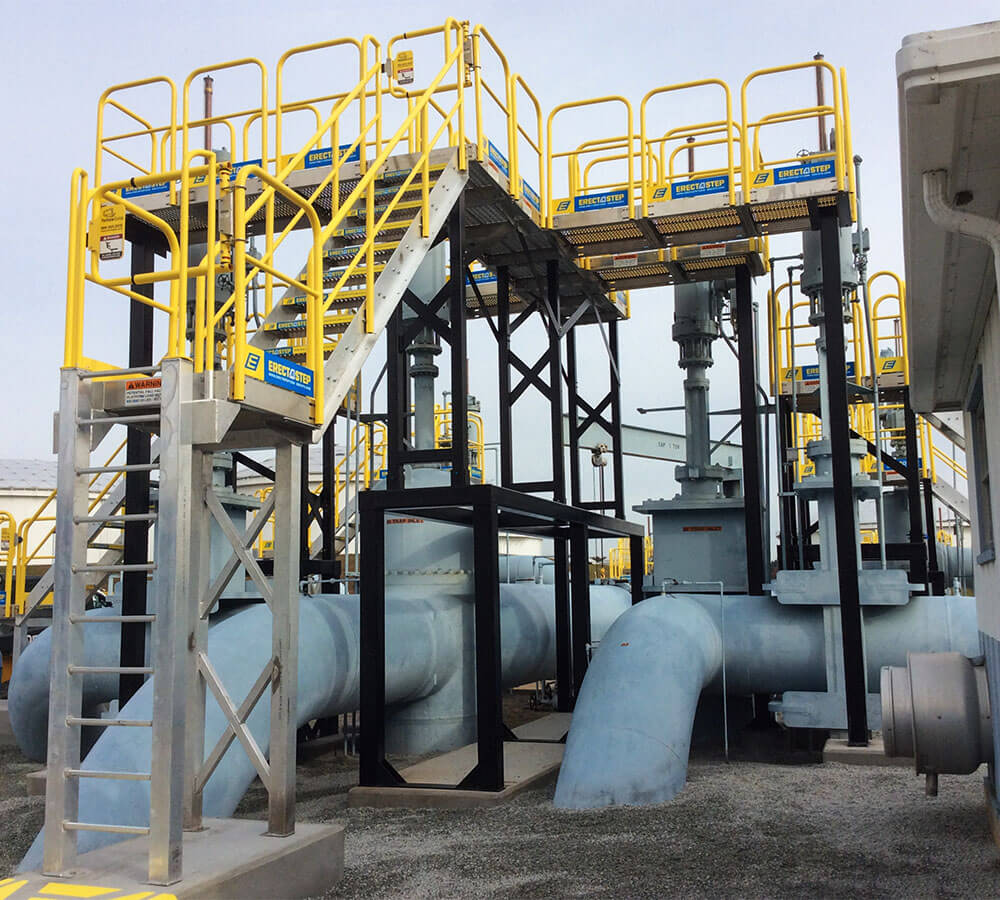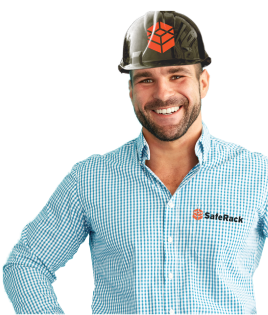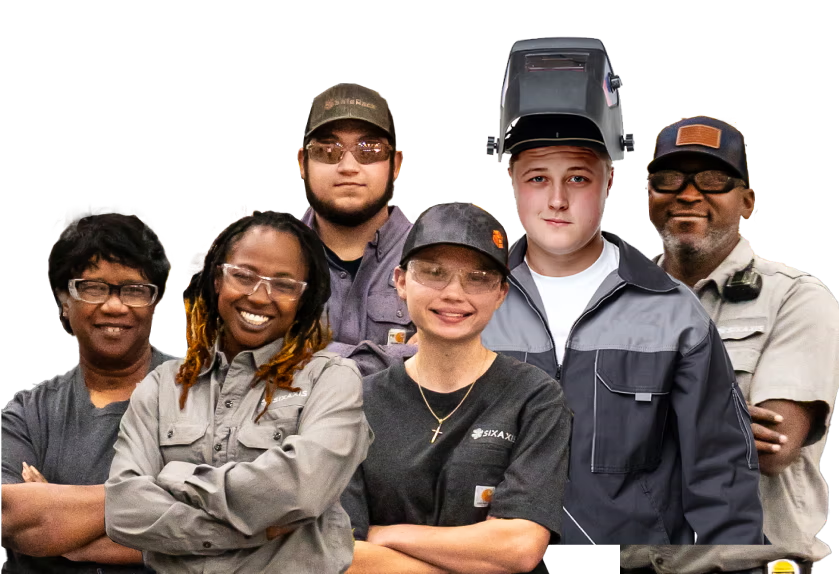
Proper valve commissioning has been shown to reduce and/or eliminate valve leakage after installation, allowing pipeline ball valves to seal 100% bubble tight for many years. It can also eliminate the need for operators to purchase many of the spare parts recommended by some valve manufacturers. The steps outlined in this article have proven to prevent valve damage and subsequent leakage from occurring.
Produced by a variety of global manufacturers, pipeline ball valves are tested according to API 6D (or similar standard) specifications. These tests include high-pressure hydrostatic shell tests and seat seal tests that verify the valve’s ability to hold a hydrostatic seal. Air seat tests, backseat tests, and other optional tests may be performed, as well.
For double block and bleed specifications, the ball is cycled to the closed position and each seat is independently tested for 2 to 30 minutes — depending on valve size — followed by a test to both seats simultaneously. The valve must seal with no visible pressure loss for the duration of the test.
Once testing is complete, a manufacturer issues a performance certificate.
Not only are ball valves not designed to require lubrication for normal operation, but use of lubricants and/or sealants during API hydrostatic testing is strictly prohibited. Improper handling and sand/dirt contamination can also cause minor seat damage between the time the valve is shipped from the factory and while it’s sitting at the pipeline right-of-way waiting for installation.
Valves are typically cycled when actuators are installed, as well as during hydrostatic testing of the pipeline. Minor leak paths can form when dry contaminants can create tiny scratches on the metal seating surfaces and soft insert material, causing minor leak paths. These minor leaks become easier to identify after high pressure gas has been introduced into the pipeline.
Minor seal leaks can be sealed by injecting light grade lubricants or sealants like Sealweld Total-Lube #911 into the standard seat injection fittings provided on pipeline ball valves. (Sealweld’s 5050 Ball Valve Sealant is effective on more severe leak paths.) The larger PTFE particle size and variety in regular grade 5050 can be safely used with all types of sealant injection fittings and internal check valves without risk of plugging any check valve mechanisms or internal passages.
Before a valve is shipped, it may be coated with a light varnish to guard unplated external surfaces from corrosion. Internal surfaces are coated with light oil or filled with light grease, and end covers are typically installed to keep water and airborne contaminants from internal surfaces.
The valve, which may or may not be crated, is then handled by truckers, forklift operators, stevedores, deck hands on the vessel, and warehouse personnel before finally being delivered to the site where to be prepared for installation. Preparation includes removing the protective end covers, then placing the valve on the ground to be painted or coated.
Before welding into the pipeline, the construction crew pre-heats the closures on the end of each valve. As welding takes place, the weld is X-ray inspected to verify its integrity. After the weld area is recoated or taped and the valve buried with the rest of the pipeline, the pipeline is filled with water and hydrostatically tested to verify the integrity of the pipe, welded connections, and threaded fittings. The pipeline is then de-watered, dried, and prepared for the introduction of high-pressure natural gas.
Contaminants like sand, dirt, pebbles and rocks, sand blasting material, hand tools, timbers, and others are routinely normally discovered in valve bodies, pig receivers, and scraper/filter devices after start-up. These contaminants can cause tiny scratches to the seating surfaces, often leading to minor valve seat leakage.
Many valves already have leakage problems by the time operators take possession of pipelines from contractors. As testing shows, the introduction of high-pressure gas will cause even minor scratches to leak. Without preventive maintenance, these scratches can continue to erode into larger leak paths.
VALVE MANUFACTURING FACTORY PROCEDURES
Pipeline operators shall prepare written specifications for the design, manufacturing, and testing procedures of each valve. There should also be specific instructions for re-testing in case valve fails the first test.
The absence of manufacturing standards for sealant injection fittings allows valve manufacturers to install any type of sealant fitting, usually whichever variety is the most economical. To prevent sub-standard sealant injection fittings from being installed at the factory, engineering specifications on the initial inquiry and purchase order should clearly identify that Sealweld Flow Wolf sealant fittings and Flow Wolf inner check valves be installed by the manufacturer. Each sealant injection fitting is clearly stenciled “SEALWELD FLOW WOLF” on the wrench flats for positive verification.
Pipeline ball valves are often designed with body vent fittings that allow maintenance technicians to verify the valves’ sealing ability. Engineering standards produced by pipeline companies should also include provisions for utilizing full port ball valves for body bleed purposes instead of conventional body vent fittings. Many body vent fitting designs utilize very small vent passages. These small passages restrict the flow of gas and may cause a buildup of body pressure, as the level of leakage into the body cavity cannot be expelled.
A pipeline engineer and/or consulting inspector should personally verify all testing conforms to API, as well as the valve manufacturer’s and pipeline company’s written specifications. The inspector should also verify that all test results are accurate, as well as properly documented and coded. He or she should also visually inspect the project to ensure that good machining and welding practices were followed. Note: All machined metal shavings and welding slag should be removed from the valve body, seat ring pockets, stem/trunnion, and all threaded connections prior to assembly.
The valve shall be cycled to the full open position upon completion of hydrostatic testing. Then, the valve shall be purged of water and dried. The seat sealant system shall be filled by injecting a light grade synthetic valve lubricant through the sealant injection fittings.
Package the valve for shipment with air-tight end closures to prevent shipping grease from leaking out and to prevent air, rain water, and sea spray from leaking in. Then, cycle all body vent/drain valves in the closed position. The crate shall clearly labelled with specific handling instructions, including how and where to pick-up the valve or crate, how the crate is positioned (i.e. this end up), its weights and dimensions, and how to stack it, with full identification of the serial number, manufacturer’s job number, and customer order reference number.
PREPARING FOR INSTALLATION
Once the valve arrives at the valve site, the VCT shall re-verify that the crate identification information matches the accompanying paperwork and VALVE LOG data, and that the crate arrived undamaged.
If crate has been opened or otherwise damaged, the VALVE LOG should clearly identify who opened the crate and for what reason(s). If the log is not marked properly, a representative of the manufacturer should witness the valve’s condition as it is uncrated in order to assess the extent of the damage (if any) and what actions are required to re-verify its integrity.
After uncrating the valve from its original shipping crate, a metal tag shall be permanently attached (if not already attached) to the valve that clearly identifies the valve’s serial number, job number, valve number, and all relevant information.
After the VCT verifies that the valve was handled properly during unloading, it shall be lifted via external slings attached at positions as indicated by the manufacturer. It is strictly forbidden to lift the valve by inserting a lifting pole or sling through the bore hole in the ball. It is also forbidden to lift it by attaching a sling around the stem or gearset. Also, the protective end covers should not be removed from the valve.
After the valve is unloaded from the truck, it should be placed directly on timbers or pallets off the ground — never directly on the ground. It should be positioned with the stem pointing up. Extreme care during unloading to ensure that the sealant fittings, body vent fittings, valve stem, and/or gearset are not bent, pinched, or otherwise damaged.
RESPONSIBILITIES OF THE VALVE COMMISSIONING TECHNICIANS (VCT)
Upon arrival at the valve site, the VCT shall verify that the valve identification is correct and that all documentation, manuals, and the valve log are attached. The technician is responsible for all on-site documentation until commissioning procedures are complete.
The VCT shall remove the end cover protectors, visually examine the internal components, and verify the ball is in the fully open position.
All varnish coatings must be removed from external surfaces with particular attention paid to exposed valve stems. It is imperative that all plated surfaces are not scratched during varnish removal. The valve may not be fitted with a manual gearset or power operator at this time. If this will be done at the installation site, all exposed valve stems should first be cleaned, wrapped with plastic waterproof covering, and taped to secure.
Note: In cases where a power operator was fitted to the valve at an outside facility or fitted in the field, it is crucial that steel dowel pins are used with normal flange bolts to prevent the valve and operator from flexing.
The VCT shall verify that all fittings and connections attached are correct, intact, and undamaged. The technician shall also ensure that the stem seal system on each ball valve is energized. For ball valves with buttonhead fittings in the stem seal, injection pressure must not exceed 3,000 psi. The valve log should indicate that the stem seal is energized and holding pressure.
The seat sealant fittings shall be visually inspected for compliance with the operator’s instructions. Non-standard fittings are to be rejected and replaced. The fittings are to be tested by injecting a light lubricant/sealant into each seat ring.
The seat sealant system shall be topped up with light grade synthetic lubricant/sealant. As the system is filled, the previously injected sealant will be extruded into the valve body next to the ball and seat ring interface. The VCT shall look inside the valve to ensure that sealant is protruding around the circumference of the ring. Excess sealant shall be smeared around the circumference of the ring to fill in the gap between the ball and seat ring, and then leveled so it doesn’t protrude into the inside of the pipeline.
Next, the VCT shall verify that all body vent/drain fittings or full port ball valves are properly installed, lubricated, and functioning properly. Plug valves are preferred for body vent purposes on large diameter ball valves, while full port ball valves are preferred on those with small diameters.
For buried valves with stem extensions, the piping used to extend the stem shall be internally coated with a plastic epoxy coating at the factory. If the extension is fitted at the valve site, the technician shall verify that the inside surfaces have been properly coated with epoxy paint prior to installation.
The VCT should verify that the metal components used to extend the stem are intact and undamaged by transport and that they are coated or plated to prevent corrosion. The VCT shall also verify that the stem extension is complete with the required bleed/drain or inspection ports.
If vent holes have been drilled but not threaded and plugged, the technician shall verify that the internal components are unaffected. In the event of stem leakage, the stem riser may be subject to line pressure. The riser should be fitted with a small diameter 2000 psi ball valve with a relief valve attached. Not only will this warn field personnel of a stem leak, but it will also keep preventing water from intruding. The ball valve shall be in the open position. Pipeline company engineers shall determine the correct pressure setting for the relief valve.
In the case of valves with manual gearboxes, the VCT is responsible for removing the inspection cover from the gearbox and inspecting that water has not entered. The gearbox is to be filled with a premium anti-seize lubricant before the inspection cover is reattached.
The VCT is also responsible for ensuring the valve isn’t contaminated after arriving at the job site. The end caps must be firmly reattached and not removed until just prior to welding into the pipeline.
The receiver must ensure that handling at the job site is done according to specifications. The valve must be handled and hoisted externally per the valve manufacturer’s manual, without a wooden pole or metal pipe being placed through the valve bore.
INSTALLATION INTO THE PIPELINE
The onsite inspector must ensure that all welding procedures are performed in accordance with valve manufacturer and company specifications. They should take special care to ensure the valve body does not overheat and damage valve body castings or internal elastomers, such as Teflon seals and o-rings.
After welding and weld inspection, the VCT must top up the valve’s seat sealant system with light sealant. Top up quantities are approximately 1/8th the required quantity to fill the system from empty. This will ensure that welding slag or similar debris will be pushed out of the pocket.
The external surfaces of the valve, stem extension, and sealant riser extension must be covered with a protective coating per construction specifications. Special care must be taken to ensure that all moving parts and external fittings are not coated. The valve log shall be marked accordingly.
HYDROSTATIC TESTING
Hydrostatic testing shall be performed per the valve manufacturer’s specifications.
The pipeline shall be filled with water with all valves in the fully open position. This will push all construction debris downstream to the end of the test section, as opposed to the bottom of the valve body where it could plug off the body vent or body bleed fitting. When the pipeline is full of water — but prior to building pressure — the water pumps should be shut down.
Before pressurizing the pipeline, rotate all ball valves to the 1/2 closed/open position, as illustrated below. This will prevent a pressure differential in the valve body during hydrostatic testing. The VCT shall verify that all valves are in the 1/2 closed/open position prior to achieving full test pressure, and the valve log shall be marked accordingly.
After the valves have been turned 1⁄2 open/closed, the VCT shall approve the startup of the hydrostatic test pumps. Pressure will be taken to 50% of MOP, the pumps shall be stopped and every valve, flange, and fitting must be visually inspected for signs of leakage. After all visible leak points have been eliminated, the pumps shall be started and the pipeline brought to full test pressure.
During testing, the valve shall be visually inspected for evidence of leakage at the stem seal, gearbox seal, body closure seal, and all threaded connections. All leak points must be repaired prior to gas being introduced into the system.
Upon completion of a successful hydrostatic test, the valve shall be returned to the full open position. The seat sealant system shall be topped up after the valve is in the full open position, and the valve log shall be marked accordingly.
Note: The valve must not be allowed to remain in the 1/2 closed/open position for an extended period of time, as this can result in the elastomers in the seat ring becoming deformed, resulting in severe seat leakage.
In most cases, the pipeline is dewatered by conducting pigging operations. The mainline is pigged, which pushes all water downstream. The pig assembly may also include batches of methanol and/or other chemicals between pigs to absorb all water present. Normally propelled by high-pressure nitrogen gas or natural gas, sel-type pig trains may also be used to treat the inside of the pipeline for corrosion.
BACKFILLING THE PIPELINE
The pipeline construction inspector shall ensure proper backfilling procedures are followed. No large rocks or sharp stones can make contact with the valve body, stem extension, or sealant piping extensions. The VCT shall witness the backfilling and mark the valve log accordingly.
INSTALLING POWER OPERATORS
The construction contractor is responsible for having the power operator installed and functioning properly. Only an authorized representative of the actuator manufacturer shall perform installation and calibration. The representative shall provide written verification that steel dowel pins have been properly installed between the mounting flange and the power operator. This will prevent any rotation or flexing between the components.
All automatic fail safe triggering systems (or line break controls) must be installed and functioning properly. These systems shall be disabled during hydrostatic testing procedures, but must be tested and functioning when high-pressure gas is introduced.
The VCT shall be instructed on all power operator maintenance procedures and obtain all relevant maintenance manuals from the power operator maintenance technician. The valve log shall be marked accordingly.
HIGH PRESSURE GAS TESTING
At the pipeline operator’s request, the pipeline may be tested with gaseous nitrogen at high pressure to verify that all flanges, valves, and connections will hold high-pressure gas. Otherwise, the pipeline will be pressurized with high-pressure natural gas.
The valve must be cycled to the half closed/open position to pressurize the body cavity, and then returned to the fully open position. The body vent/drain valve shall be opened to drain the water. The valve shall be cycled slightly, just off the fully open position to apply constant pressure and blow all water out of the body cavity. When all water has been removed, the valve shall be returned to the fully open position. The seat sealant system shall be topped up, and the valve log shall be marked accordingly.
Next, with the pipeline under normal operating pressure, the VCT shall inspect the valve for seat leakage. The technician shall verify that each valve will hold a 100% bubble tight seal in BOTH the full open and closed positions. Note: the Grove B-4C and B-5 ball valves have a hole in the top and can only be tested in the closed position.
To test, the body vent fitting should be opened with the ball in the fully open position.
Assuming the valve seals completely, the actuator stops, and/or the stem position shall be marked with a permanent marker or punch mark and the valve log marked accordingly.
If minor leakage persists, the valve shall be topped up and the valve stops adjusted to achieve a perfect seal. When the seal is achieved, the actuator stops and the stem position shall be marked accordingly. In the event that a seal can not be maintained, the representative of the valve manufacturers shall be consulted. In the event leakage is very minor, a heavier sealant may be injected per mutual consent of the operator, contractor, and valve manufacturer. The valve log shall be marked accordingly
The valve shall be cycled to the closed position and the body cavity vented to the atmosphere.
Assuming the valve seals 100%, the actuator stops and/or the stem position shall be marked and the valve log marked accordingly.
In the event that minor leakage persists, the valve shall be topped up and the valve stops adjusted in an attempt to achieve a perfect seal. When the seal is achieved, the actuator stops and the stem position shall be marked accordingly. In the event that a seal can not be maintained, the representative of the valve manufacturer shall be consulted. If the leakage is very minor, a heavier sealant may be injected per the mutual consent of the operator, contractor, and valve manufacturer. The valve log shall be marked accordingly.
FINAL ACCEPTANCE
Upon completion of commissioning, the valve seat sealant system shall be topped up by the VCT and the valve log shall be marked accordingly.
All valves shall be placed in their normal operating position. The VCT shall ensure that all valve log data is complete and accurate and sign-off on each valve log, which is to be co-signed by the pipeline inspector for verification.
All valve logs, records, manuals, and reports shall be formally presented to the pipeline operator with written procedures for normal operating procedures and emergency sealing operations.
For a period of up to three years, while the contractor’s warranty is still in effect, each valve should be topped up at three-month intervals with the seat sealant system cleaned at least once per year.
VALVE REJECTION
If the valve arrives at the storage facility in a damaged or not-as-specified condition, the representative of the valve manufacturer shall be notified. The manufacturer may decide, at their option and expense, to replace or repair the valve.
If the valve arrives at the job site in a damaged or not-as-specified condition, the storage facility receiver shall be notified so steps can be taken to repair or replace it.
If the valve is installed and fails to pass the hydrostatic or high pressure gas test, the contractor, pipeline operator, and valve manufacturer shall be consulted before injecting a heavier valve sealant. In the event that heavy sealant is not successful at maintaining a reliable seal, the operator, contractor, and valve manufacturer will decide if the valve should be repaired or replaced.
SUMMARY
The pipeline engineering department shall prepare a written specification for the valve manufacturer and consulting inspector. It shall refer to the applicable manufacturing codes with exceptions and additional tests clearly defined.
The specification shall include specific instructions for sealant injection fittings and all external accessories. The manufacturer shall attach a metal tag clearly identifying the function and purpose of each external fitting, i.e. the seat sealant, stem sealant, and body vent/drain fittings.
The specification shall include specific instructions to each manufacturer specifying that all lifting points, methods of lifting, and handling procedures, which must be clearly defined on the outside of each crate. The specification shall include reference to the type of protective end covers, as well as crating and marking instructions.
The following personnel shall become familiar with the written specifications:
- 1) Pipeline purchasing department
- 2) Valve manufacturer and their local representative/agent
- 3) Consulting inspector at the valve factory
- 4) Shipper/receiver at the receiving warehouse
- 5) Valve commissioning technician (VCT)
- 6) Pipeline construction superintendent
- 7) Pipeline construction inspector
The pipeline purchasing department shall advise the valve manufacturer of all written specifications before manufacturing. Before the valve is placed on order, written confirmation from the manufacturer regarding their ability to comply with the written specification must be received.
The valve manufacturer and consulting inspector shall be responsible for ensuring all written specifications are followed and test results fully documented.
The shipper/receiver shall be responsible for ensuring the valve arrives and leaves the storage facility in perfect condition and that copies of all documentation including the valve log are attached to each valve in a waterproof plastic bag.
The valve commissioning technician (VCT) shall ensure the valve is handled and installed properly, as well as that the valve log is fully completed and all preventative maintenance procedures have been fully completed test results recorded.
The pipeline construction superintendent shall ensure all construction practices are fully documented and those written procedures adhered to.
The pipeline construction inspector shall be responsible for ensuring all construction codes and practices are adhered to.
Source: Dean Chisholm, Sealweld Services – Pipeline Valve Maintenance, Calgary, Canada





